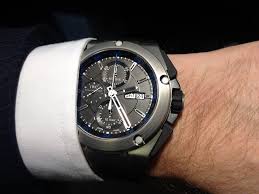
How dare you pair a iwc ingenieur replica and a Volkswagen! This is not any VW. It's the Karmann Ghia. A piece of design in its own category.
Walter Dorwin Teague Jr., an American, was a pioneer of industrial design. He worked in a company founded by his father at the beginning of the 20th century, which designed everything from Kodak camera interiors to dentists' chairs and even the Marmon 16 motorcar,hellorolex.watch regarded as incredibly innovative for its time. Walter Sr taught Walter Jr the importance of adding artistry to everything, telling him that everyday objects can "additionally enhance the total beauty of our world" and extend the appreciation of beauty to those realms in which it is most effective - the home, factory, shop, and street.
Walter Jr. was asked, in the mid-1960s after the death of his father, to make a list of all the beautiful things he had seen. The list included an Eames Chair, an Olivetti Typewriter and a Carlsberg Beer Bottle. The items were "ranked according to the order they came to his mind" and, as it happens, the first thing to come to his mind was a Volkswagen Karmann Ghia.
It doesn't take an expert to recognize that this car is a stunning vehicle, with lines that haven't changed in almost 70 years. It's unclear who exactly is responsible for the looks, as more than one designer has claimed credit. It is certain that the car would not have been possible without the input of two major European design houses as well as Chrysler’s chief designer Virgil Exner,Rolex Air king Replica who was the man responsible for bringing about the age unrestrained US automobiles, characterized by angular shapes and magnificent tail fins, in the 1950s.
The car shown here was inspired by two of Exner's designs from the early 1950s. Exner designed both the Chrysler d'Elegance concept car and the K-310, but Ghia made the bodies. Mario Boano was Ghia's designer at the time. The models were based on styling themes he had already developed. Some people have claimed that Boano created the Karmann Ghia's first sketch independently of Exner.